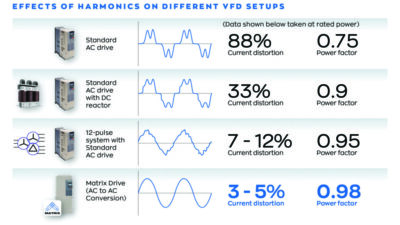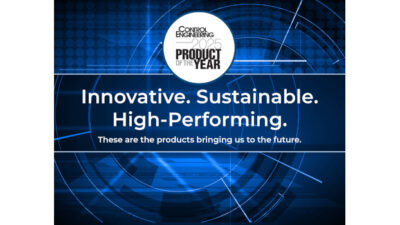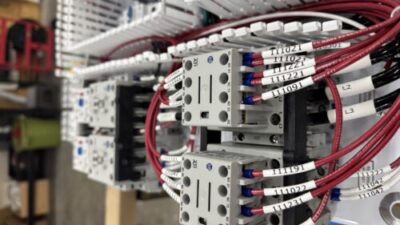New environmental regulations are putting increased pressure on manufacturers to measure and record their emissions more accurately on a continuous basis. Not only are manufacturers accounting for emissions’ impact on the environment—as required by regulations—but many also seek to reduce regulatory compliance complexities, costs and risks, and capitalize on emission trading p...
Sidebars: Smart grid standards Solar heats up Manufacturer guilty EPA Emission Evaluation
New environmental regulations are putting increased pressure on manufacturers to measure and record their emissions more accurately on a continuous basis. Not only are manufacturers accounting for emissions’ impact on the environment—as required by regulations—but many also seek to reduce regulatory compliance complexities, costs and risks, and capitalize on emission trading programs.
This movement among manufacturers is occurring globally, from Asia to the European Union and the United States, as virtually every country tightens emissions regulations and requires manufacturers to be accountable for what exits their facilities during the production process.
Traditional approaches to emissions management involve complicated data collection systems and reporting workflows, many of which are hardware-based, manpower-intensive, and rely heavily on multiple spreadsheets and log forms. These approaches lack the accuracy, timeliness, consistency, and security demanded by today’s regulations. Even small errors can lead to inaccurate reporting, missed deadlines, permit violations, financial penalties and ultimately lost profit.
Sensor validation model output and validated signal for failed temperature transducer.
All that leads to the question: How can companies monitor this data cost effectively? And more importantly, monitor it without installing and maintaining expensive hardware and systems that, even with redundancies and state-of-the-art equipment, are still susceptible to failures and human error that can cost companies thousands, and even millions, in fines.
Software-based continuous emission monitoring (CEM) system are one possible solution that more manufacturers are investigating.
Key to the interest in software-based CEM systems among manufacturers is the ability to use real-time process data to predict emissions, which provides an accurate, reliable, and cost-effective alternative to traditional hardware-based CEM systems. The predictive monitoring and recording of software-based CEM systems allow companies to identify vulnerabilities before they cause emission limit violations by means of an online model using historical and real-time process data. This allows manufacturers to maximize production while staying within emission limits and making effective emission trading decisions according to business and market objectives.
Sensors, calculations and models
How do software-based CEM systems do this? By monitoring emissions through hybrid modeling technology, incorporating empirical calculations, and using historical and real-time data from existing plant sensors. The models provide real-time predictions of emissions from a wide range of sources with documented accuracy and reliability. This approach, known as a predictive emissions monitoring system (PEMS), allows existing operator console interfaces to present information from the models to operations or engineering staff. The monitoring system can then be interfaced with commercially available reporting software packages.
A software-based CEM system provides real-time emissions monitoring through correlations with existing process and ambient sensors—resulting in accurate, virtually real-time emission information. The outputs can be interfaced with control applications to help reduce emissions and improve operations. Furthermore, access todetailed, up-to-the-minute, plant-wide emissions information allows the control of emissions to be factored into plant automation strategies on a continuous basis.
Additional benefits of software-based continuous emissions monitoring versus hardware-based approaches, include:
Lower installation and maintenance costs;
Higher reliability;
Lower safety risks;
Faster deployment, quicker compliance;
No labor and material costs associated with operations and maintenance; and
Fast, accurate fault finding and reduced mean time to repair.
New regulatory compliance demands require manufacturers to assess emissions performance within local, state and federal requirements in order to calculate hourly and daily records and ensure they are operating below their emission cap. All emission sources—including flares, heaters, cooling towers, and storage tanks—require assessment.
Achieving the EPA-mandated minimum operational standard for demonstration of continuous compliance requires the ability to provide reliable data in the event of sensor failure. Manufacturers can accomplish this by using a sensor validation system. These systems should consist of models that can detect failed (or drifting) sensors and automatically reconstruct an appropriate value used in place of the failed sensor to determine accurate emissions levels. The model can then accurately predict emissions regardless of sensor failures and interruptions.
Implementing a software-based CEM system should begin with a discussion of the scope of the project. Participants establish the functional design of the monitoring system and identify the necessary process sensors. If there is no existing process in place (such as a hardware CEMS or other monitoring system), engineers can obtain process data from a data historian or data logger. Also, an environmental testing firm can be used to collect stack emissions data.
The emission unit will be assessed through its entire range of operation over a two- to seven-day period (depending upon the complexity of the unit) while data is collected. Manufacturers can then use the process and stack data to construct a highly accurate emissions model for the software-based CEM system.
www.controleng.com
Author Information
Rich Hovan is manager of Environmental Solutions at Pavilion Technologies, a Rockwell Automation company. The Pavilion Technologies Software CEM is certified by the EPA and state pollution control agencies for predictive emissions monitoring. The system was proven to meet the EPA’s PEMS requirements on boilers, furnaces, reciprocating engines, turbines and other emissions sources.
Smart grid standards
A special smart grid leadership meeting kicked off the NIST Smart Grid Standards Summit. Industry executives were invited to share their visions for developing the standards into a roadmap for successful smart grid implementation.
Solar heats up
Enphase Energy, a global manufacturer of solar microinverter systems, garners new venture capital financing based on increased interest in the technology. Meanwhile, Siemens sponsors Solar Exchange 2009 event.
Manufacturer guilty
Atlantic States Cast Iron Pipe Co. is found guilty of “committing flagrant abuses of environmental and worker safety laws.” The manufacturer’s plant manager, maintenance supervisor, and an engineer are also cited in the case.
EPA Emission Evaluation
The EPA Emission Measurement Center developed and published five PEMS (predictive emissions monitoring system) protocols and performance specifications, all available on the EPA’s Technology Transfer Network Web site at
The specifications are based on data from five software CEM installations.
The EPA hired an independent consultant to evaluate PEMS, and from this counsel, determined that PEMS requires sensor validation to eliminate the possibility of erroneous predictions due to failed sensor indications. The EPA also determined that certified professional personnel must construct a sensor validation system.
The Emission Measurement Center now recognizes predictive monitoring as a viable alternative to hardware CEMs, and most states follow the EPA’s recommendation.



